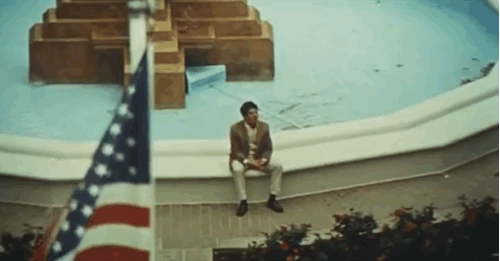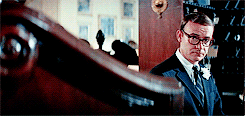1) Relate what was discussed in
class or the text to the screening.
In class, we learned that The Graduate was a 1967 film directed by Mike Nichols. Nichols is
one of only 12 prolific people who have won an Emmy, an Oscar, a Tony and a
Grammy. He was also awarded with the National Medal of Arts in 2001 and the
Lifetime Achievement Award from the American Film Institute in 2010. He won the
Academy Award for Best Director for his work on The Graduate. His other notable films include Silkwood, Who’s Afraid of Virginia Woolf, Remains of the Day and Working Girl. He was also married to
Diane Sawyer.
The
Graduate was written by Calder Willingham and Buck Henry and
grossed over $40 million at the box office, making it a success. The Graduate was nominated for seven
awards, including Best Picture, Best Actor, Best Actress, Best Supporting
Actress, Best Screenplay and Best Cinematography but only won for Best
Director.
This movie featured Dustin Hoffman’s first starring
role as Benjamin Braddock. He was nominated for the Oscar for Best Actor but
lost out. He later won Oscars for Kramer vs.
Kramer and Rain Man. The movie
also starred Anne Bancroft as Mrs. Robinson who won an Oscar for her role in The Miracle Worker and Katharine Ross
who appeared in films such as Butch
Cassidy & the Sundance Kid and Stepford
Wives.
The
Graduate was notable for being one of the first true youth
rebellion movies that illustrated the generation gap between the Baby Boomers
and their parents. It showed the protagonist struggling with what to do after
graduation and provided a view into societal values by way of satire.
The
Graduate was done in a modern expressionist form. There were
obvious camera shots and cutting, as well as awareness of film as an intrusive
art. The film was meant to be part of the art, rather than unobtrusive,
reminiscent of Orson Welles’s Citizen
Kane. The cuts and camera movements were made obvious to viewers. Scenes
were connected via sounds and dialogue. Songs start in one scene and end in
another. The action also overlaps. Nichols used techniques such as the long
lens to compress space, dramatic time changes through matching cuts, rapid
cutting and editing, and rolling focus to change perception.
In the first third of the film, the framing is tight
to symbolize how uptight Benjamin is. At that point, he is a track star,
doesn’t smoke, talks as little as possible and is nervous, isolated, and
confused about his future. Adults constantly crowd him and tell him what he
should do. The camera loosens as Benjamin becomes more worldly, changes
clothes, smokes, drinks, becomes more confide and rebellions and begins
speaking and questioning more.
The film was also revolutionary for using songs by
Simon and Garfunkel in its soundtrack rather than a typical movie score. Some
sequences are done with just the soundtrack for noise. Sound is what leads the
story. The Graduate also featured
iconic scenes such as Ben rushing Elaine out of the church which has been spoofed
several times, including by Mike Myers in Wayne’s
World.
2) Find a related article and summarize the
content. (on the film, director, studio,
actor/actress, artistic content, etc.) You can use the library or the internet. Cite the article
or copy the url to your journal entry. Summarize in your own words the
related article but do not plagiarize any content.
His father
set up a medical practice in New York where Nichols was raised. After Paul
Nichols died, his sons and wife struggled financially. Nichols found work to
support himself while he studied at the University of Chicago, before returning
to New York to study acting under the tutelage of Lee Strasberg.
Nichols then went back to Chicago where he began a
comedy troupe where he met performance partner Elaine May. They worked together
successfully during the late 1950’s and ten years later took their act to
Broadway, where they gained the adoration of both audiences and critics.
Nichols then moved behind the scenes and became a
director on Broadway, debuting with Neil Simon’s Barefoot in the Park which earned him his first Tony Award in 1964.
Soon after, he won Tony Awards for his direction on the plays Luv and The Odd Couple.
He then moved on to film when he directed 1966’s Who’s Afraid of Virginia Woolf? starring
Elizabeth Taylor and Richard Burton. He took home the Academy Award for his
directing on The Graduate starring
Dustin Hoffman. Throughout the 1960’s
and 70’s, Nichols continued to work on both stage and screen, winning two more
Tony Awards for Prisoner of Second Avenue
and Annie, and Oscar nominations
for Silkwood and Working Girl.
In his later years, Nichols worked on a diverse
array of projects, from musicals to comedies to dramas. He found success with Closer, Spamalot, and Charlie Wilson’s War. Some of his last
projects included the Broadway revival of Death
of a Salesman, for which he won his sixth Tony, Betrayal, and an HBO adaptation of Terence McNally’s Master Class.
Nichols was married several times. He married ABC
anchor Diane Sawyer in 1988 and stayed with her until his death. He also had
three children, Daisy, Max and Jenny. Nichols died at the age of 83 on November
19, 2014 after suffering cardiac arrest. Despite his death, Nichols’s legend
lives on as one of only a small collection of people to have won Emmy, Oscar,
Tony and Grammy Awards.
3) Apply the article to the film screened in
class. How did the article support or change the way you thought about
the film, director, content, etc.
After reading the article, I can see parallels between
Mike Nichols and the film version of Benjamin Braddock. I know that in the
original book, Benjamin is attractive and blonde. He is a more WASP-like
character that would have appeared to fit in more with the others in the film.
The film version is played by Dustin Hoffman, who
like Nichols was Jewish, although Hoffman was born in the United States. Like
film Benjamin, Nichols was an outsider in the culture he was brought into.
Benjamin spoke little in the first act of the movie, often answering in monosyllables.
Nichols only knew two English phrases when he came to America. Benjamin didn’t
fit in at first. Neither did Nichols.
However, like Benjamin, Nichols flourished as he got
older. While Benjamin became more worldly and outspoken, Nichols went out and
worked, gaining experience and finding his own voice in different creative
mediums. I believe this is what influenced Nichols into putting his own
creative input into the film version of this already well known work.
It is also worth noting that film executives at
first vetoed the idea of casting non-WASP Dustin Hoffman as Benjamin, wanting
instead to have Robert Redford star in the movie. But Nichols fought, and
ultimately won, making movie history in the process.
4) Write a critical analysis of the film, including your personal opinion,
formed as a result of the screening, class discussions, text material and
the article. I am less interested in whether you liked or disliked a
film, (although that can be part of this) than I am in your understanding
of its place in film history or the contributions of the director.
The
Graduate was the first film to not only bridge but unveil the
generation gap between the youth and the parents of the 1960’s. It kickstarted
a wave of teenage and young adult rebellion movies that has never ceased and
remains impactful almost 50 years after it’s initial release.
Dustin Hoffman acts wonderfully as the young main
character, though a college graduate, acts at times like a lost child who doesn’t
know which direction to turn to. He’s naïve and awkward, but can also be sweet
and charming as he comes out of his shell. Anne Bancroft also stars in the film
as Mrs. Robinson, and bring vitalized energy into every scene in which she
appears, even as she becomes colder and more villainous. She always remains
cool and poised, making her appear like the cat that has gotten the mouse. Either
Benjamin or Mrs. Robinson’s daughter Elaine could serve as the mouse, as she
manipulates both of them into meeting her needs.
The innocence of youth is played with. Ben is a nice
young man but he is still manipulated into an affair with the wife of his
father’s business partner, who he has known since he was young. He is able to
feel compassion, such as when he apologizes to Elaine for making her feel bad
on their date, but at the same time, shows little regard for the way his
actions affect others. He never once stops to think how his parents may be
affected by the affair. While the Robinsons are at Ben’s “Welcome Home” party
and are invited to Ben’s home several times, all while Mr. Robinson encourages
Ben to take out his daughter, both of Ben’s parents are noticeably absent at
Elaine’s wedding, implying that they were left out due to the Robinsons’ betrayed
and angry feelings about their son.
Though the film came out in 1967, The Graduate still feels modern, barring
some of the outfits and changed societal norms, such as the Robinsons offering
Ben drinks before he drives home and most of the characters smoking in public. It’s
almost strange to think that it was made before other “old” films, such as The Godfather, Jaws, and Star Wars.
This film was also instrumental in the shift from
movies using composed orchestrations as their soundtrack, to actual pop music
from a famous band, in this case; Simon and Garfunkel. Songs like “The Sound of Silence” and “Mrs. Robinson” can still be
heard on the radio today. The impact of The
Graduate can still be seen today, with countless movies, songs, and
television shows making references to its most iconic scenes, such as Ben
taking Elaine away from the church, and Ben being seen through Mrs. Robinson’s
legs when he says the famous line “Mrs. Robinson, you’re trying to seduce me.”
Most notable, however, is probably the famous ending
with it’s “What now…?” feel. Ben and Elaine have escaped her family and are
seemingly free to live as they choose. However, they have no plans; no idea of
where to go and Elaine is still technically married. This makes the ending
somewhat bittersweet and calls back to Ben’s earlier feelings of being directionless.
It is also probably why so many people can relate to the film and it’s
characters and why The Graduate will
continue to be popular with future generations.
CHECKLIST FOR PLAGIARISM
1) (x) I
have not handed in this assignment for any other class.
2) (x) If
I have reused any information from other papers I have written for other
classes, I clearly explain that in the paper.
3) (x) If
I used any passages word for word, I put quotations around those words, or used
indentation and citation within the text.
4) (x) I
have not padded the bibliography. I have used all sources cited in the
bibliography in the text of the paper.
5) (x) I
have cited in the bibliography only the pages I personally read.
6) (x) I
have used direct quotations only in cases where it could not be stated in
another way. I cited the sources within the paper and in the bibliography.
7) (x) I
did not so over-use direct quotations that the paper lacks interpretation or
originality.
8) (x) I
checked yes on steps 1-7 and therefore have been fully transparent about the
research and ideas used in my paper.
































No comments:
Post a Comment